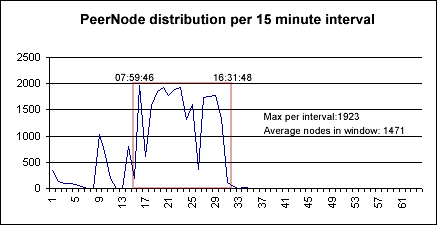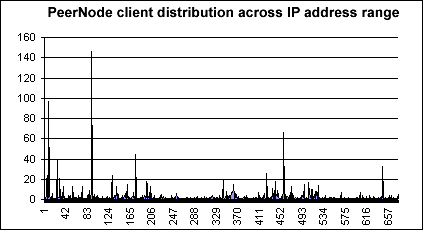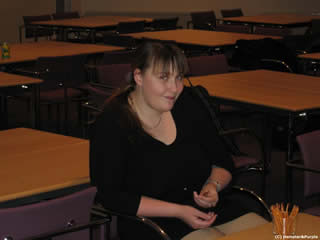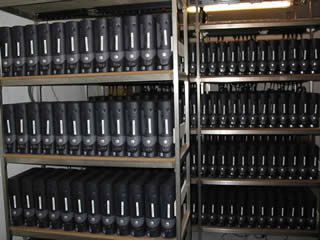

The ChessBrain project is powered by Open Source software, including the following key projects.
The ChessBrain project consists of two primary computers, which are accessible via two separate Internet domains. The first computer is at ChessBrain.net. ChessBrain.net runs under Gentoo Linux and serves web pages using Apache. The second machine is accessible at distributedchess.net and runs a custom application server called the ChessBrain SuperNode server, under RedHat 9.0 Linux. Both machines are hosted by Eight Hundred Pound Gorilla (EHPG.net), our hosting partner.
Both ChessBrain machines use a variety of open source products, such as the Linux operating system, the Apache web server, and the MySQL database server. XML based web services are provided by Apache, PHP and Perl.
During the World Record attempt the ChessBrain SuperNode server was running on a single Intel P4 3.0 GHz Hyper threaded machine.
The SuperNode server is a multi-threaded custom server application written in GNU C++ under Linux. Additional information can be found in our September 2003 Linux Journal article.
During the event the SuperNode server tracked various pieces of information and stored it in a MySQL database. We mined the database for the information down below.
The SuperNode server logs the total number of connected PeerNodes at 15 minute intervals. The data allows us to see the total number of active PeerNodes across a period of time. ChessBrain's world record attempt tracked the total number of unique machines which contributed to the playing of a single game. The total number of unique machines (2070) was higher than the total number of machines active at any given moment. The graph below illustrates the number of active machines within 15 minute intervals.
The maximum number of machines active within a given interval was 1923 machines. An average of 1471 machines were active across the game period.

A total of 2070 machines communicated from a total of 668 different IP address ranges. The goal is to isolate machine which are likely to be clustered within an IP address block, as is commonly the case within institutions.
The spikes in the graph below represent large clusters of machines.

This data reveals that 227 locations hosted more than one machine. Ten locations hosted more then 20 machines, and 4 locations hosted more than 40 machines. The chart below shows the distribution.
| Ranges | Machines within IP range |
| 227 | IP address ranges hosted more than 1 computer |
| 56 | IP address ranges hosted more than 5 computers |
| 27 | IP address ranges hosted more than 10 computers |
| 10 | IP address ranges hosted more than 20 computers |
| 6 | IP address ranges hosted more than 30 computers |
| 4 | IP address ranges hosted more than 40 computers |
| 3 | IP address ranges hosted more than 50 computers |
| 2 | IP address ranges hosted more than 70 computers |
| 1 | IP address ranges hosted more than 100 computers |
The data indicates that 1/3 of the total address range was dominated by individuals/groups running more than one machine.

| Max In: | 585.0 pps (0.0%) | Average In: | 204.0 pps (0.0%) | Current In: | 196.0 pps (0.0%) | ||
| Max Out: | 804.0 pps (0.0%) | Average Out: | 352.0 pps (0.0%) | Current Out: | 333.0 pps (0.0%) |
Bits per Second: "Weekly" Graph (30 Minute Average)

| Max In: | 391.4 kb/s (0.4%) | Average In: | 228.6 kb/s (0.2%) | Current In: | 101.3 kb/s (0.1%) | ||
| Max Out: | 740.0 kb/s (0.7%) | Average Out: | 360.0 kb/s (0.4%) | Current Out: | 275.2 kb/s (0.3%) |
A number of compute clusters were used using the event. At this time we have a confirmed report involving the use of a a 241 processor cluster.
Sidsel
Jensen is Vice Chair of BSD-DK, board member of DKUUG,
and NordU tutorial chair and conference organizer.
|
 |
 |
The BioCluster, which participated during the event, consists of 241 Dell OptiPlex, Pentium 2.4 GHz machines, and is normally used for bioinformatics research. |
Because the BioCluster was competing for the SuperNode's attention, not all of the machines in the cluster were able to submit results. Our records indicate that only 146 machines in the BioCluster logged results with the Supernode. This is not to say that only 146 machines were active. Every machine in the cluster might have been actively processing work, but only 146 machine managed to get through to the SuperNode. This is an issue on the ChessBrain side and not the BeoCluster! We need to examine better ways of utilizing massively distributed computing resources.
Site © 2005C.Justiniano[rss]
ChessBrain is co-developed by Carlos Justiniano (USA) and Colin Frayn (UK) with the support of thousands of individuals throughout the world. If you need to contact the authors directly you may use the contact information below. All other questions and comments should be directed to:
EMAIL:
Carlos Justiniano
Colin Frayn